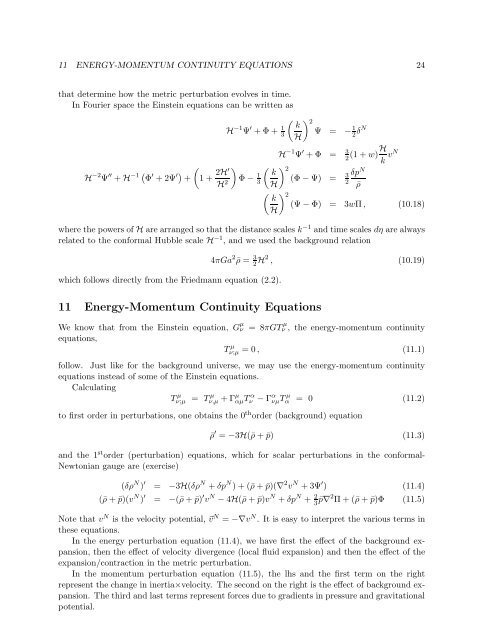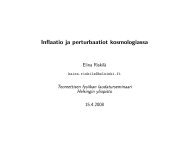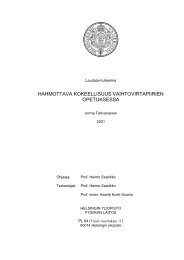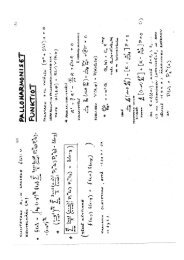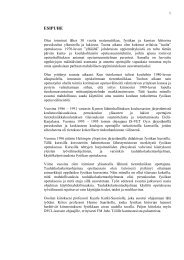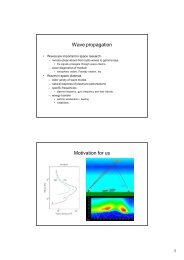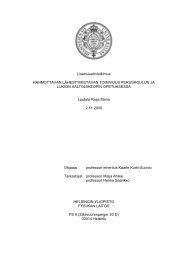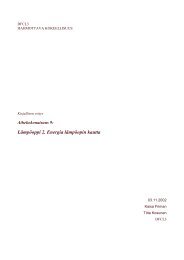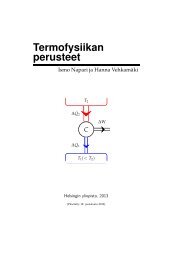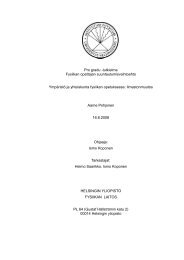Cosmological Perturbation Theory, 26.4.2011 version
Cosmological Perturbation Theory, 26.4.2011 version
Cosmological Perturbation Theory, 26.4.2011 version
Create successful ePaper yourself
Turn your PDF publications into a flip-book with our unique Google optimized e-Paper software.
11 ENERGY-MOMENTUM CONTINUITY EQUATIONS 24that determine how the metric perturbation evolves in time.In Fourier space the Einstein equations can be written asH −1 Ψ ′ + Φ + 1 3( kH) 2Ψ = − 1 2 δNH −1 Ψ ′ + Φ =3 2 (1 + w)H k vNH −2 Ψ ′′ + H −1 ( (Φ ′ + 2Ψ ′) +(1 + 2H′ k 2 )ΦH 2 − 1 3(Φ − Ψ) =H) 3 δp N2¯ρ( ) k 2(Ψ − Φ) = 3wΠ, (10.18)Hwhere the powers of H are arranged so that the distance scales k −1 and time scales dη are alwaysrelated to the conformal Hubble scale H −1 , and we used the background relationwhich follows directly from the Friedmann equation (2.2).4πGa 2¯ρ = 3 2 H2 , (10.19)11 Energy-Momentum Continuity EquationsWe know that from the Einstein equation, G µ ν = 8πGT ν µ , the energy-momentum continuityequations,= 0, (11.1)T µ ν;µfollow. Just like for the background universe, we may use the energy-momentum continuityequations instead of some of the Einstein equations.CalculatingT µ ν;µ = T µ ν,µ + Γ µ αµT α ν − Γ α νµT µ α = 0 (11.2)to first order in perturbations, one obtains the 0 th order (background) equation¯ρ ′ = −3H(¯ρ + ¯p) (11.3)and the 1 st order (perturbation) equations, which for scalar perturbations in the conformal-Newtonian gauge are (exercise)(δρ N ) ′ = −3H(δρ N + δp N ) + (¯ρ + ¯p)(∇ 2 v N + 3Ψ ′ ) (11.4)(¯ρ + ¯p)(v N ) ′ = −(¯ρ + ¯p) ′ v N − 4H(¯ρ + ¯p)v N + δp N + 2 3 ¯p∇2 Π + (¯ρ + ¯p)Φ (11.5)Note that v N is the velocity potential, ⃗v N = −∇v N . It is easy to interpret the various terms inthese equations.In the energy perturbation equation (11.4), we have first the effect of the background expansion,then the effect of velocity divergence (local fluid expansion) and then the effect of theexpansion/contraction in the metric perturbation.In the momentum perturbation equation (11.5), the lhs and the first term on the rightrepresent the change in inertia×velocity. The second on the right is the effect of background expansion.The third and last terms represent forces due to gradients in pressure and gravitationalpotential.


